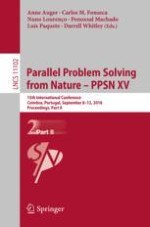2018 | OriginalPaper | Buchkapitel
First-Hitting Times for Finite State Spaces
verfasst von : Timo Kötzing, Martin S. Krejca
Erschienen in: Parallel Problem Solving from Nature – PPSN XV
Aktivieren Sie unsere intelligente Suche, um passende Fachinhalte oder Patente zu finden.
Wählen Sie Textabschnitte aus um mit Künstlicher Intelligenz passenden Patente zu finden. powered by
Markieren Sie Textabschnitte, um KI-gestützt weitere passende Inhalte zu finden. powered by
